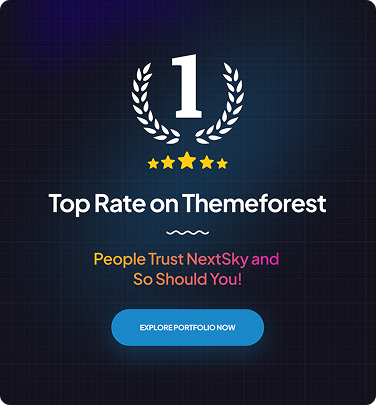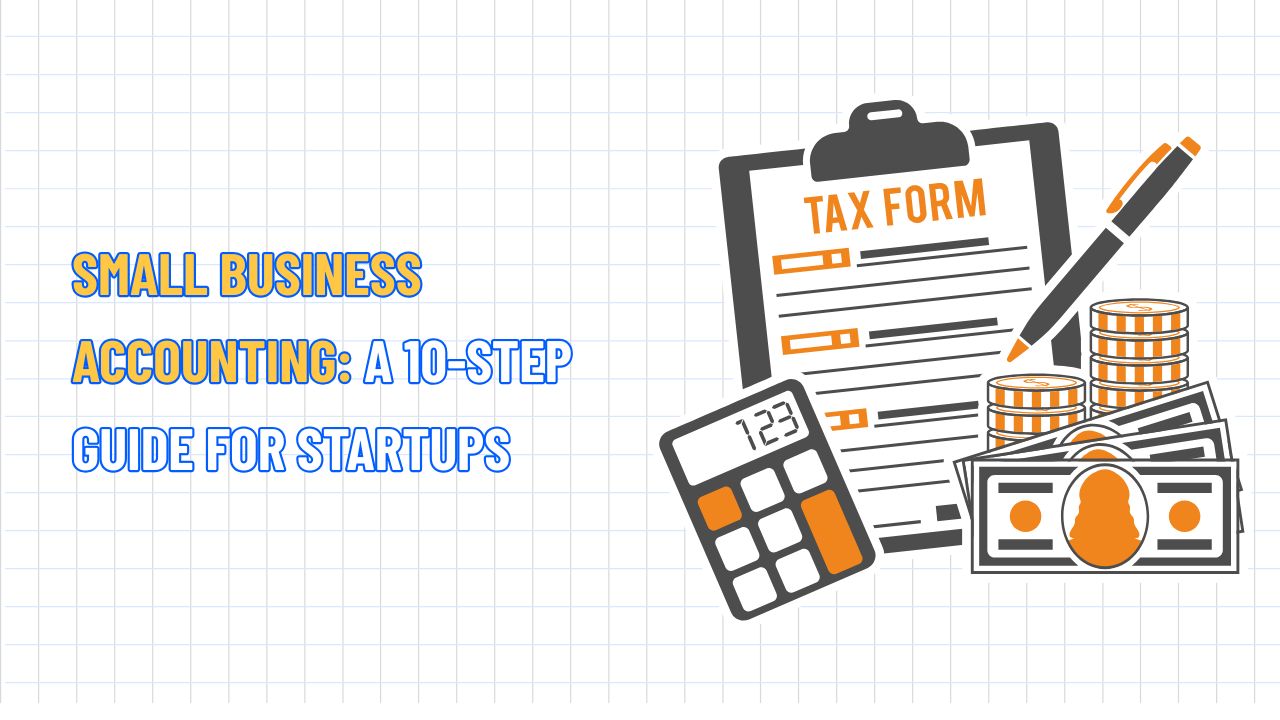Small Business Marketing Guide with Effective Tips
Table of Contents Hide
As a small business marketing owner, you're constantly juggling operations, customer care, and innovation to stay competitive in a crowded market. In this guide, NextSky will take you from foundational basics to advanced tactics, providing a clear roadmap to attract customers, boost conversions, and achieve sustainable growth.
What is small business marketing?
Marketing for small businesses is the art of using limited resources to reach the right customers at the right time. Unlike mass-market campaigns, small businesses succeed through agility, creativity, and building niche communities. The Forrester 2025 report shows that 68% of small businesses achieve higher ROI with multichannel personalization rather than broad advertising. The goal isn't just sales—it's nurturing relationships, turning one-time buyers into lifelong advocates.
Read more: What is A Small Business? A Comprehensive Guide to Definition
Essential steps before starting marketing
1. Identify your target audience
If you want your products to truly resonate with customers, ask yourself: Who has the pain point you can solve? It could be busy suburban parents in Ohio seeking eco-friendly kids' clothing, or remote freelancers craving a productivity-boosting app.

To pinpoint them accurately, build a clear customer persona with demographics, pain points, habits, and where they're active online, drawn from surveys or Google Analytics data. When you focus on the right audience, your entire strategy, from ads to content, becomes sharper, more persuasive, and, per Forrester, can double conversion rates.
Read more: 10 Best Web Hosting for Small Businesses You Shouldn't Miss
2. Clarify your unique value proposition
What makes you the top choice in your customers' eyes? Boil it down to a crystal-clear statement, like: “We deliver mobile-optimized Shopify themes that skyrocket conversions without the tech headaches.” Put this message front and center on your website and emails, then ask: Can visitors grasp “why choose you” in just 5 seconds? If not, refine it immediately. This isn't empty sloganeering; it's the guiding north star for all your communications.
3. Build your brand identity
Surveys show that in e-commerce, mobile is the primary device, accounting for over 60% of traffic and transactions. So, ensure every product image pops with crisp clarity on a customer's smartphone. Don't design for desktop first—go mobile-first to win!
4. Map your customer journey
Sketch the customer journey from “awareness” (when they Google “best product for [problem]”) to “purchase” (adding items to cart), then to “advocacy” (leaving reviews and referring others). Your task is to spot gaps, like clunky checkout processes or lack of transparency, and fill them with targeted content, messaging, and experiences that make the path seamless and compelling.

5. Choose your primary channels
Instead of spreading thin across channels, focus your marketing resources on platforms where your audience actually spends time—to avoid wasted effort and maximize impact. You might consider this strategy:
- Email: For building relationships, delivering deep value, and converting leads into paying customers.
- Instagram: Ideal for visual brand-building, sharing engaging stories, and fostering close community interactions.
- Google: Optimize to reach people already searching for solutions or products like yours.
6. Launch a mobile-friendly website
Your website is your tireless 24/7 salesperson. To maximize its selling power, zero in on three key elements:
- Lightning speed: Keep load times under 3 seconds—because in the digital world, speed is make-or-break for retaining visitors.
- Seamless navigation: Design clear, intuitive paths like a well-marked map, so customers find what they need in seconds without frustration.
- Inspiring CTAs: Calls to action should stand out, persuade, and naturally guide visitors toward buying or signing up.

7. Set up lead capture
Sign-up forms for newsletters or free guides are powerful tools to turn visitors into loyal subscribers. For maximum effectiveness, place them strategically:
- Exit-intent pop-ups: Use them as a last-chance hook for users about to leave.
- Inline forms in content: Embed them mid- or post-article, right when readers are most convinced by your value and highly engaged.
8. Implement basic CRM
Ditch the spreadsheet chaos and switch to free tools like HubSpot or Zoho for easy, scalable lead tracking. These platforms offer game-changing features to keep everything under control without overwhelm:
- Automated logging: Every lead interaction is captured instantly—no manual entry.
- Smart segmentation: Group leads by criteria to send the right message to the right person at the right time.
- Follow-up automation: Set up smooth nurture sequences to ensure no opportunity slips away.

Read more: 60+ Inspirational Small Business Quotes for Entrepreneurs
Core marketing strategies for small businesses
With your foundation in place, layer on momentum-building tactics. These strategies, honed from real e-commerce wins, emphasize inbound growth: Attract with value, convert with trust, retain with delight.
Set up for success
- Foundational website content: Deliver straightforward answers to “Who are you?” and “Why choose you?” via an About page, FAQ for objections, and transparent pricing. For online stores, add client logos or “Featured in…” badges right away to build credibility.
- Pain-point-targeted blog: Post 1–2 articles weekly, optimized for business keywords to drive long-term traffic by solving customer queries.
- Analyze to optimize: Google Analytics reveals what's working via bounce rates, top-viewed pages, and traffic sources. Tweak underperformers to boost results.
- Smart email marketing: Capture emails with pop-ups or footer forms, then segment by browsing and purchase behavior. Abandoned cart reminders can recover 10–15% of lost sales.
Connect and convert
- Automated welcome series: Send a 3-email sequence post-sign-up: Start with a lead magnet, follow with a “quick win” for excitement, and end with a gentle nudge offer.
- Personalize every touchpoint: Ditch bland emails—insert names and reference past behaviors. Per Campaign Monitor, segmented campaigns can generate 760% higher revenue than mass blasts.
- Personalized outreach: Gate enticing eBooks like “The 2025 E-Commerce Marketing Handbook” behind sign-up forms. On social, they become natural magnets for quality lists.
- Consistent social rhythm: Post 3–5 times weekly on your main platform, mixing value-sharing content, engagement prompts, and subtle promotions.
- Turn interactions into value: Reply to comments within hours to transform chats into free PR. Customer questions and feedback are endless content goldmines.
Expand your reach
- Partner with micro-influencers: Team up with niche creators (5K–50K followers) for authentic content. A single Reel review can drive 20% more traffic than self-made posts.
- Leverage user-generated content (UGC): Encourage reviews or shares with small incentives, then feature UGC on your site to lift conversions by up to 29%.
- Co-marketing with complementary brands: Host joint webinars or bundle offers with partners to tap new audiences. One Shopify partner doubled sign-ups through such collaborations.
- Tap short-form video: Use TikTok and Reels for under-30-second clips like “A Day in the Life of a Small Business Owner” to maximize views and engagement.
- Host webinars or deep-dive guides: Dive into hot topics like AI personalization, then gate replays behind email forms for 2–3x higher-quality leads than other methods.
- Repurpose content relentlessly: Turn one blog into a video script, infographic, or tweet thread. From a single asset, expand to 5+ customer touchpoints.
Read more: TOP 15 Detailed Small Business Tips to Help You Succeed
Digital marketing tips tailored for small businesses
In the digital world, small businesses don't need massive budgets to gain traction. With smart, proven strategies, you can create a serious edge:
- Testimonials & social proof: Embed customer video reviews on your site for powerful trust-building. Pair with automated post-purchase review requests to turn past buyers into living endorsements.
- Compelling referral programs: Reward shares with discount codes or perks. McKinsey research shows word-of-mouth can drive 20–50% of total sales—a worthy investment.
- Webinars & live sessions: Host free “Mastering Marketing” talks to showcase expertise, build authority, and collect quality emails. It's value-giving that expands your prospect pool.
- UGC campaigns: Launch contests like #MyBrandStory, where customers share real experiences. The result? Authentic, emotional content that spreads like wildfire on social.
- AI-optimized e-commerce: Add upsell pop-ups or personalized product recommendations. Today's AI lets you implement these with a few clicks—turning your online store into a 24/7 smart salesperson.










